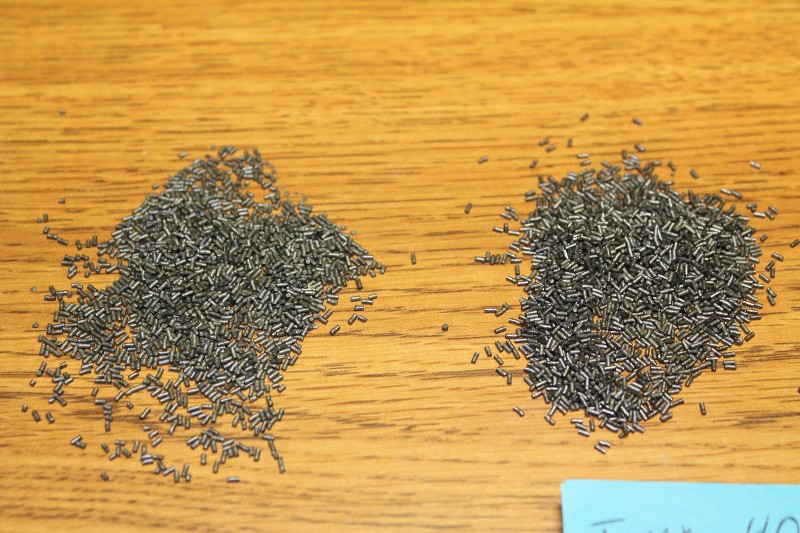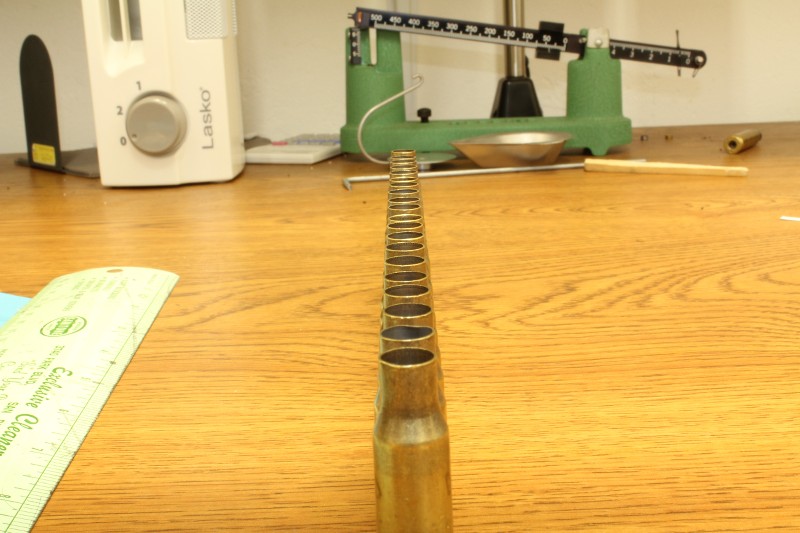Gregory Gauvin said:
On the box Federal says they use 168 grain Sierra Matchking BTHP bullets. I do not see a cannelure. My gunsmith says trying to mimic this load will be difficult, as others have tried, reason being, is that Federal use a proprietary blend of powder that no one really knows what it is, nor can get. The only information I can gather is muzzle velocity is stated at 2600 ft/sec. OAL measures 2.80".
This information you got is not quite right. I've pulled sample boxes from lots of GM308M that were 20 years apart and found 43.5±0.2 grains of IMR4064 in both. The rated velocity is 2650 fps, but that is from a 24" SAAMI test barrel. 2600 fps is about what a 22" M14 barrel would produce if the chamber were dead minimum size and its bore dimensions matched the SAAMI standard. Federal does use a special grade of IMR4064 with calcium carbonate added to reduce muzzle flash in their military sniper rifle loads under the 175 grain SMK (MK316 m.0), but I don't know that they use the flash suppressant version in the GM Match load. I'm sure they did not before the MK316 was developed. They may now just to avoid buying and tracking two different runs of powder.
Typically, even when a commercial ammunition maker uses one of the powder numbers that is also available to handloaders, they buy it in bulk grade, which has wider burn rate tolerances than the canister grade handloaders use, but which they compensate for with pressure gun testing. The GM308M and M2 seem to be an exception to that, given the charge weights are so identical over such a long time span. I suppose it may even be possible they get a special more tightly controlled burn rate grade.
The primer they use is their own Federal 205M, which must be used to copy the load exactly, as must their COL.
The hitch is the brass. The military marksmanship units found new brass to be more accurate than reloaded brass in service rifle match weapons. This is likely due to the geometry being more symmetrical. The M14 is famous for bending rims and fireforming cases heads out of square with the long axis of the case. Additionally, it takes some extra effort to avoid pulling case necks off-axis as a conventional expander typically does. This is probably a good deal of what frustrates people's efforts to duplicated the GM308M and GM308M2 (175 grain SMK) ammunition exactly. Some folks find re-annealing the brass every load cycle helps uniform bullet pull.
I've been lucky in that my M1A does not tend to produce out-of-square case heads, so I don't have that particular issue. If yours doesn't either, then you are down to the same issues that reloading for a bolt gun have. You can search this forum on methods of keeping case necks true to the overall longitudinal axis of the case. You want to be sure to do a proper job of primer seating. Federal recommends the anvil be compressed 0.003" into the cup during seating of their large rifle primers. That is also called setting the bridge or reconsolidating the primer. I recommend you clean the insides of case necks. Using the stainless pin cleaning method or the ultrasonic method will typically clean them perfectly. If you don't do either, try spinning a bore brush in a drill and running them over it. This is all to help keep bullet pull consistent. I recommend using the Redding Competition Seater die, as it's the only one I've seen that can redirect a bullet tip to align with lower runout than the neck itself has. The M14 will knock them off a little on loading, but it will always be in the same direction and orientation in the chamber, which groups just as well as straight does.
Because of the varying of neck tension and the possible lot differences in your powder, I would buy a box of GM308M to fire over your chronograph on the same day and under the same conditions you use to test your hand loads. Bring more than one powder charge adjust the load of the 4064 to get the same average velocity reading out of your gun that you get from the purchased ammunition. That should put you in very close stead with the original. You can buy Lapua brass, which has very nearly identical capacity to Federal cases, is very well made, but expensive. Most military cases will have a little less capacity in this chambering than Federal does, but if it is Lake City, the difference can be close enough that the charge weight difference to get the same velocity from your gun is less than half a grain. Again, work up to a matching velocity from your gun.
Good luck with it.



